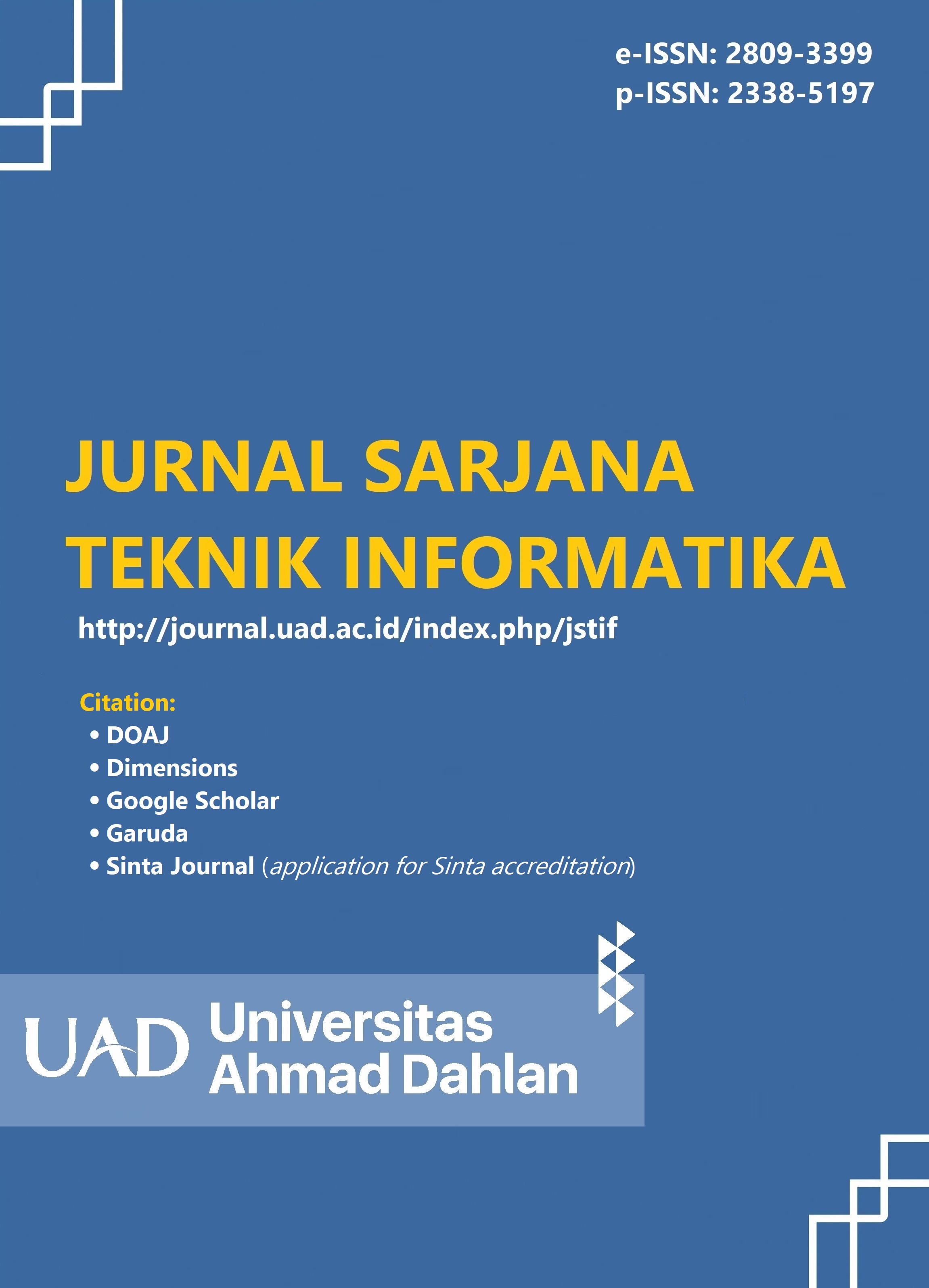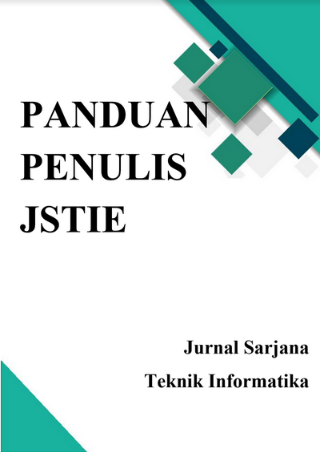Sentiment Analysis of Hate Speech in Lombok News Using the Support Vector Machine (SVM) Algorithm
DOI:
https://doi.org/10.12928/jstie.v12i2.28984Keywords:
Berita Online, Analis Sentimen, SVMAbstract
Berita online telah menjadi kebutuhan mendasar di kalangan masyarakat umum. Berita online juga berpotensi dapat merugikan masyarakat online atau netizen melalui tidak terkendali komentar atau opini mengenai penyebaran berita yang bersifat negatif. Support Vector Machine (SVM) merupakan salah satu metode pada machine learning yang dapat menentukan tingkat sentimen dari komentar negatif atau positif. Metode SVM terdapat beberapa tahapan yaitu cleansing, tokenizing, emojis, stopword, dan stemming. Penelitian ini bertujuan menganalisis sentimen hate speech pada berita di Lombok dengan metode SVM. Hasil pengujian pada data latih menggunakan metode SVM memberikan tingkat akurasi sebesar 81%.References
Huda, I.A., “Perkembangan Teknologi Informasi dan Komunikasi (TIK) Terhadap Kualitas Pembelajaran Di Sekolah Dasar”. Jurnal Pendidikan Dan Konseling (JPDK), 2(1), pp.121-125,2020,doi: https://doi.org/10.31004/jpdk.v1i2.622.
Suardana, I.K. ”Peran Media Online Firstlomboktour.com Dalam Memasarkan Pariwisata Budaya Di Pulau Lombok. Jurnal ekonomi vol 1 no 2 (2022), 2022, doi: https://doi.org/10.53977/jw.v1i2.710.
Aniq Noviciatie Ulfah*1 , M. Khairul Anam2.2020. Analisis Sentimen Hate Speech Pada Portal Berita Online Menggunakan Support Vector Machine (SVM).Jurnal Teknik Informatika dan Sistem Informasi.Vol. 7, No. 1, April 2020, Hal. 1-10. DOI: https://doi.org/10.35957/jatisi.v7i1.196
Faridhotun, N. Haerani, E. Candra, R.M. 2023. Analisis Sentimen Ulasan Aplikasi WeTV Untuk Peningkatan Layanan Menggunakan Metode K-Nearst Neighbor. Journal Of Information System Research (JOSH). doi: https://doi.org/10.47065/josh.v4i3.3349
N. Fitriyah, B. Warsito, D. Asih, dan I. Maruddani, “Analisis Sentimen Gojek Pada Media Sosial Twitter Dengan Klasifikasi Support Vector Machine (SVM),” JURNAL GAUSSIAN, vol. 9, no. 3, hlm. 376–390, 2020.
D. S. Utami dan A. Erfina, 2021. Analisis Sentimen Pinjaman Online Di Twitter Menggunakan Algoritma Support Vector Machine (SVM). vol. 1 (2021): meningkatkan inovasi dan daya saing diera pandemi melalui riset pada bidang sistem informasi dan manajemen informatika
D. Darwis, E. Shintya Pratiwi, A. Ferico, dan O. Pasaribu,2020.penerapan algoritma svm untuk analisis sentimen pada data twitter komisi pemberantasan korupsi republik indonesiA.Jurnal Ilmiah Edutic Pendidikan dan Informatika.DOI:10.21107/edutic.v7i1.8779
G. Song, “Sentiment analysis of Japanese text and vocabulary learning based on natural language processing and SVM,” J Ambient Intell Humaniz Comput, 2021, doi: 10.1007/s12652-021-03040-z.
R. Sandoval-Almazan dan D. Valle-Cruz, “Sentiment Analysis of Facebook Users Reacting to Political Campaign Posts,” Digital Government: Research and Practice, vol. 1, no. 2, Apr 2020, doi: 10.1145/3382735.
J. Putri, A. S. Syafira, M. E. Purbaya, dan D. Purnomo, “Analisis Sentimen ECommerce Lazada pada Jejaring Sosial Twitter Menggunakan Algoritma Support Vector Machine,” Jurnal TRINISTIK: Jurnal Teknik Industri, Bisnis Digital, dan Teknik Logistik, vol. 1, no. 1, hlm. 16–21, Mar 2022, doi:10.20895/trinistik.v1i1.447.
H. C. Husada dan A. S. Paramita, “Analisis Sentimen Pada Maskapai Penerbangan di Platform Twitter Menggunakan Algoritma Support Vector Machine (SVM),” Teknika, vol. 10, no. 1, hlm. 18–26, Feb 2021, doi: 10.34148/teknika.v10i1.311.
P. Giovani, A. Ardiansyah, T. Haryanti, L. Kurniawati, dan W. Gata, “Analisis Sentimen Aplikasi Ruang Guru Di Twitter Menggunakan Algoritma Klasifikasi,” Jurnal Teknoinfo, vol. 14, no. 2, hlm. 115, Jul 2020, doi: 10.33365/jti.v14i2.679.
N. Yadav, O. Kudale, A. Rao, S. Gupta, and A. Shitole, ‘‘Twitter sentiment analysis using supervised machine learning,’’ in Intelligent Data Communication Technologies and Internet of Things. Singapore: Springer, 2021,pp. 631–642.
M. Z. Ali, K. Javed, E. U. Haq, and A. Tariq, ‘‘Sentiment and emotion classification of epidemic related bilingual data from social media,’’ 2021, arXiv:2105.01468. [Online].Available: http://arxiv.org/abs/2105.01468
M. E. Basiri, S. Nemati, M. Abdar, E. Cambria, and U. R. Acharya, ‘‘ABCDM: An attention-based bidirectional CNN-RNN deep model for sentiment analysis,’’ Future Gener. Comput. Syst., vol. 115, pp. 279–294, Feb. 2021.
Downloads
Published
Issue
Section
License
License and Copyright Agreement
In submitting the manuscript to the journal, the authors certify that:
- They are authorized by their co-authors to enter into these arrangements.
- The work described has not been formally published before, except in the form of an abstract or as part of a published lecture, review, thesis, or overlay journal. Please also carefully read Journal Posting Your Article Policy.
- The work is not under consideration for publication elsewhere.
- The work has been approved by all the author(s) and by the responsible authorities – tacitly or explicitly – of the institutes where the work has been carried out.
- They secure the right to reproduce any material that has already been published or copyrighted elsewhere.
- They agree to the following license and copyright agreement.
Copyright
Authors who publish with Jurnal Sarjana Teknik Informatika agree to the following terms:
- Authors retain copyright and grant the journal right of first publication with the work simultaneously licensed under a Creative Commons Attribution License (CC BY-SA 4.0) that allows others to share the work with an acknowledgement of the work's authorship and initial publication in this journal.
- Authors are able to enter into separate, additional contractual arrangements for the non-exclusive distribution of the journal's published version of the work (e.g., post it to an institutional repository or publish it in a book), with an acknowledgement of its initial publication in this journal.
- Authors are permitted and encouraged to post their work online (e.g., in institutional repositories or on their website) prior to and during the submission process, as it can lead to productive exchanges, as well as earlier and greater citation of published work.








